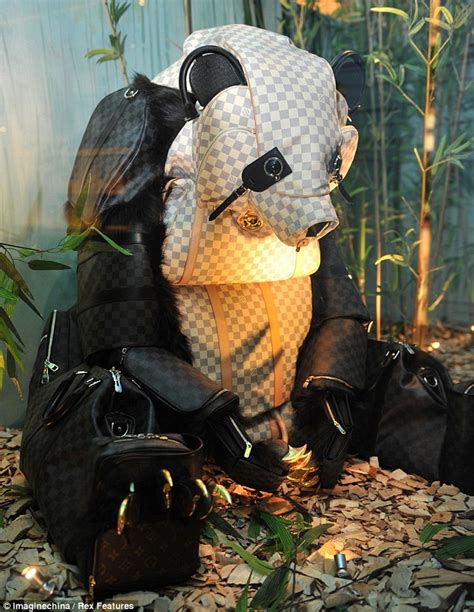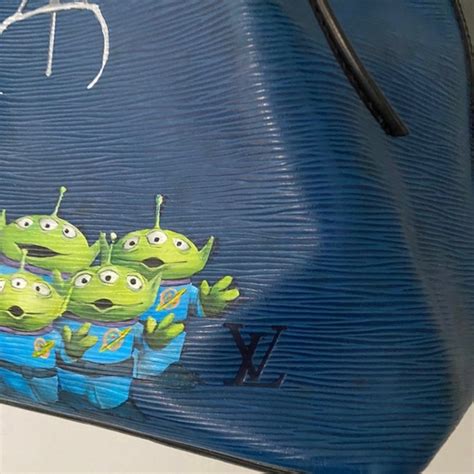zoo humain louis vuitton | Louis Vuitton human zoos zoo humain louis vuitton These shocking rare photographs show how so-called ‘human zoos‘ around the world kept ‘primitive natives’ in enclosures so Westerners could gawp and jeer at them. The . Albergue de peregrinos de la Orden de Malta Cizur Menor. CAMINO FRANCES. AppThe same great content and more in your pocket, the most up-to-date guidebook to the . .
0 · Louis Vuitton zoos history
1 · Louis Vuitton zoo controversy
2 · Louis Vuitton zoo aliens
3 · Louis Vuitton zoo
4 · Louis Vuitton sponsored zoos
5 · Louis Vuitton human zoos
$15.95
Louis Vuitton zoos history
breitling blackbird big date 44mm a44359
Louis Vuitton zoo controversy
Claim: In the late 1800s and early 1900s, Louis Vuitton sponsored "human zoos" in which black people were put on display like exotic circus animals.Boffey, Daniel. "Belgium Comes to Terms with 'Human Zoos' of Its Colonial Past." The Guardian. 16 April 2018. Dickerman, Robert. "Fair Shows How World's People Put Talents, . There is, however, no evidence that Louis Vuitton, the company or the man, sponsored the “human zoos” of the 19th and 20th centuries. An internet search turned up no .
“Did you know in the late 1800s and early 1900s, Louis Vuitton sponsored ‘human zoos’ in which black people were put on display like exotic circus animals?” This distressing . These shocking rare photographs show how so-called ‘human zoos‘ around the world kept ‘primitive natives’ in enclosures so Westerners could gawp and jeer at them. The . A viral claim asserts that Louis Vuitton sponsored human zoos in the 19th and 20th centuries. Louis Vuitton says the claim is false.

An exhibition in Paris looks at the history of so-called human zoos, that put inhabitants from foreign lands, mostly African countries, on display as article of curiosity. Over .Human zoos, also known as ethnological expositions, were public displays of people, usually in a so-called "natural" or "primitive" state. [3] They were most prominent during the 19th and 20th .
breitling chronograph automatic a13055
If visitors to the 1904 St. Louis World’s Fair grew bored of strolling along spectacular purpose-built waterways or lolling through the grand pavilions of arts and industry, . The garden was also, on occasion, used as a human zoo, where black and brown people were put in living dioramas for the ethnographic “enlightenment” of visitors like Marcel .Claim: In the late 1800s and early 1900s, Louis Vuitton sponsored "human zoos" in which black people were put on display like exotic circus animals. There is, however, no evidence that Louis Vuitton, the company or the man, sponsored the “human zoos” of the 19th and 20th centuries. An internet search turned up no sourcing to corroborate the post’s claims.

We rate the claim that Louis Vuitton sponsored racist "human zoos" in the 19th and 20th centuries FALSE because it is not supported by our research. “Did you know in the late 1800s and early 1900s, Louis Vuitton sponsored ‘human zoos’ in which black people were put on display like exotic circus animals?” This distressing message has been circulating on Facebook in South Africa since at least February 2021. These shocking rare photographs show how so-called ‘human zoos‘ around the world kept ‘primitive natives’ in enclosures so Westerners could gawp and jeer at them. The horrifying images, some of which were taken as recently as 1958, show how black and Asian people were cruelly treated as exhibits that attracted millions of tourists.
A viral claim asserts that Louis Vuitton sponsored human zoos in the 19th and 20th centuries. Louis Vuitton says the claim is false.
An exhibition in Paris looks at the history of so-called human zoos, that put inhabitants from foreign lands, mostly African countries, on display as article of curiosity. Over four centuries.
Human zoos, also known as ethnological expositions, were public displays of people, usually in a so-called "natural" or "primitive" state. [3] They were most prominent during the 19th and 20th centuries. [3]
If visitors to the 1904 St. Louis World’s Fair grew bored of strolling along spectacular purpose-built waterways or lolling through the grand pavilions of arts and industry, their wandering search for diversion might have taken them to the Philippine Reservation.
The garden was also, on occasion, used as a human zoo, where black and brown people were put in living dioramas for the ethnographic “enlightenment” of visitors like Marcel Proust. Now a wild new.Claim: In the late 1800s and early 1900s, Louis Vuitton sponsored "human zoos" in which black people were put on display like exotic circus animals. There is, however, no evidence that Louis Vuitton, the company or the man, sponsored the “human zoos” of the 19th and 20th centuries. An internet search turned up no sourcing to corroborate the post’s claims. We rate the claim that Louis Vuitton sponsored racist "human zoos" in the 19th and 20th centuries FALSE because it is not supported by our research.
“Did you know in the late 1800s and early 1900s, Louis Vuitton sponsored ‘human zoos’ in which black people were put on display like exotic circus animals?” This distressing message has been circulating on Facebook in South Africa since at least February 2021.
These shocking rare photographs show how so-called ‘human zoos‘ around the world kept ‘primitive natives’ in enclosures so Westerners could gawp and jeer at them. The horrifying images, some of which were taken as recently as 1958, show how black and Asian people were cruelly treated as exhibits that attracted millions of tourists. A viral claim asserts that Louis Vuitton sponsored human zoos in the 19th and 20th centuries. Louis Vuitton says the claim is false. An exhibition in Paris looks at the history of so-called human zoos, that put inhabitants from foreign lands, mostly African countries, on display as article of curiosity. Over four centuries.
Human zoos, also known as ethnological expositions, were public displays of people, usually in a so-called "natural" or "primitive" state. [3] They were most prominent during the 19th and 20th centuries. [3] If visitors to the 1904 St. Louis World’s Fair grew bored of strolling along spectacular purpose-built waterways or lolling through the grand pavilions of arts and industry, their wandering search for diversion might have taken them to the Philippine Reservation.

Alexander the Great is a song from the Horrible Histories TV series. It aired in Series 5, Episode 6 on June 4, 2013, & later in the Savage Songs Special. A stadium rock parody, the titular performer sings about his life as a king, conqueror, & full-time fighter.
zoo humain louis vuitton|Louis Vuitton human zoos


























